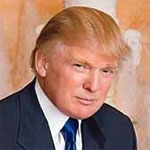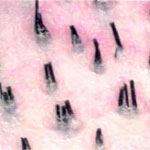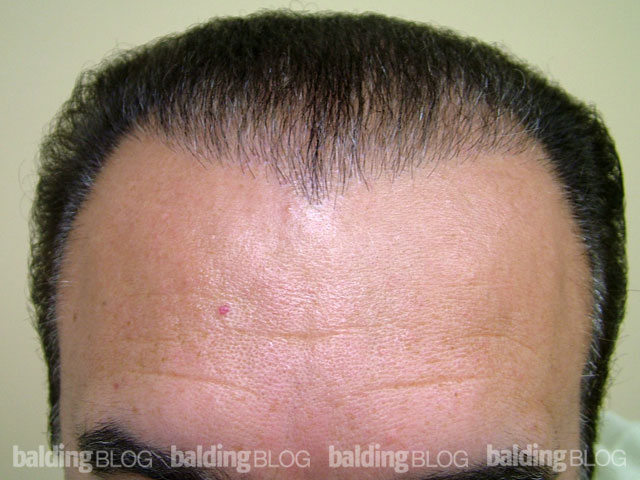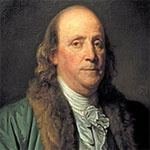Hi Dr.
I’ve been looking at your page for some time now and it is loaded with great information. I also consider myself to be fairly well educated regarding the various options available to balding men such as myself since I’ve spent years keeping up on these developments. I am 39 years old and my hairline began to recede when I was about 20. For the longest time, the rest of my hair was so thick that no one really noticed since I wore my hair long. Over the past few years, the top has thinned substantially and I no longer bother to try to style it. I just wear it very short. I’ve never wanted to be one of those guys that look like he’s trying to hide something. The problem is that I’m also not one of those guys who looks good bald. I wish I were, but I’m not. About 15 years ago I had consultations at two different hair replacement doctors and both, to their credit, told me I was not a candidate at that time and to come back in the future when my hair loss was more advanced. I’m sure that time is now. However, I’m not sure I want to commit to a transplant procedure. The biggest question I have is this. Is there really a chance for someone of moderate means such as myself to achieve a natural and attractive result from a hair transplant when people with unlimited resources like Donald Trump, David Lee Roth or the myriad other balding rich people can’t seem to do it? I would say that I’m probably somewhere around a 3 on the Norwood chart.

 I laughed when I read your question, for you see, I’ve been wondering the same thing. A good hair transplant today is the norm, but in the days when Donald Trump did it (allegedly *cough, cough*), it was not a procedure that produced undetectable results. Mr. Trump, I believe, had scalp reductions (the bald spot was cut out) and hair transplants of the older vintage. The issue for people like him should be to repair the process, but he can not wipe the slate clean and go back in time prior to having the surgery. We wrote and published in peer reviewed medical journals, most of the original articles on the art of repair. I have no hesitation discussing the repair process, but first please read some of the articles we wrote on the subject:
I laughed when I read your question, for you see, I’ve been wondering the same thing. A good hair transplant today is the norm, but in the days when Donald Trump did it (allegedly *cough, cough*), it was not a procedure that produced undetectable results. Mr. Trump, I believe, had scalp reductions (the bald spot was cut out) and hair transplants of the older vintage. The issue for people like him should be to repair the process, but he can not wipe the slate clean and go back in time prior to having the surgery. We wrote and published in peer reviewed medical journals, most of the original articles on the art of repair. I have no hesitation discussing the repair process, but first please read some of the articles we wrote on the subject:
- The Art of Repair in Surgical Hair Restoration Part I – General Aspects of Repair and Basic Repair Strategies
- The Art of Repair in Surgical Hair Restoration Part II – The Tactics of Repair
For a person having his first hair transplant, you need to find a competent doctor (when you are ready) who is artistic and has a great reputation. I stress the importance of viewing patients (one on one) as a doctor who proudly shows off his/her results by giving you the opportunity to meet many of his/her patients. This will give you a very good idea of what you would look like after a hair transplant. I always say that what you see in the patients you meet will be a reflection of the surgical results you will get. Always ask for “before” pictures when you meet these patients yourself! Not to be alarmist, but I know of one immoral doctor who used a photo in a newspaper ad of a man with no balding to promote his practice — he was legally able to call this man a hair transplant patient because he had a few grafts placed behind his thick, normal hairline.

 “Graft” can be defined as: living tissue surgically transplanted from its normal location in one part of the body into another part of the body in the same individual (an autotransplant, like hair or bone marrow transplants) or from one individual to another individual (like a kidney or heart transplant) and is expected to grow and function normally in its new location.
“Graft” can be defined as: living tissue surgically transplanted from its normal location in one part of the body into another part of the body in the same individual (an autotransplant, like hair or bone marrow transplants) or from one individual to another individual (like a kidney or heart transplant) and is expected to grow and function normally in its new location.


 This is certainly a big news story this week, but for those that haven’t followed it, please read the following links:
This is certainly a big news story this week, but for those that haven’t followed it, please read the following links:
 “…in this world nothing can be said to be certain, except death and taxes.” – Benjamin Franklin, 1788
“…in this world nothing can be said to be certain, except death and taxes.” – Benjamin Franklin, 1788